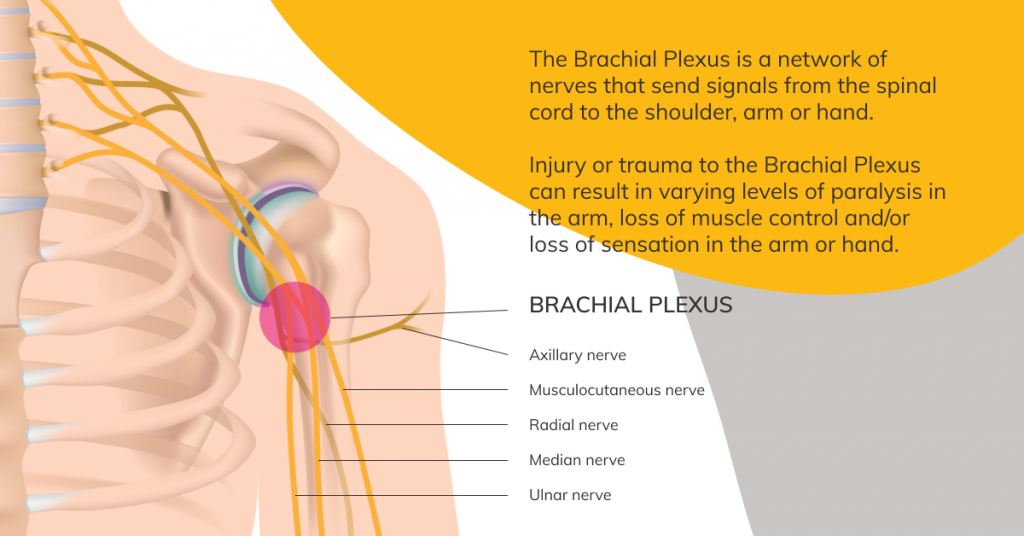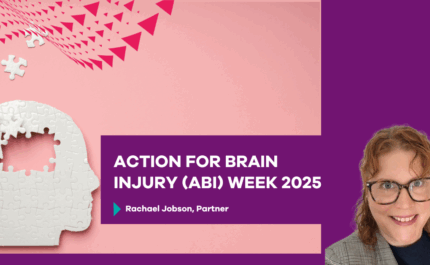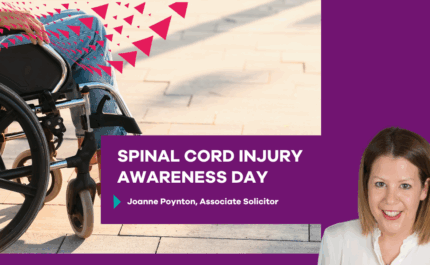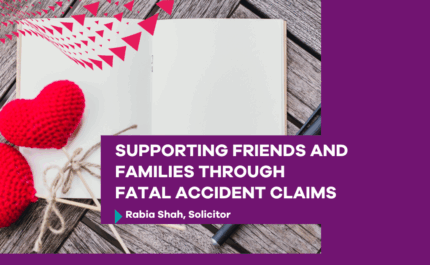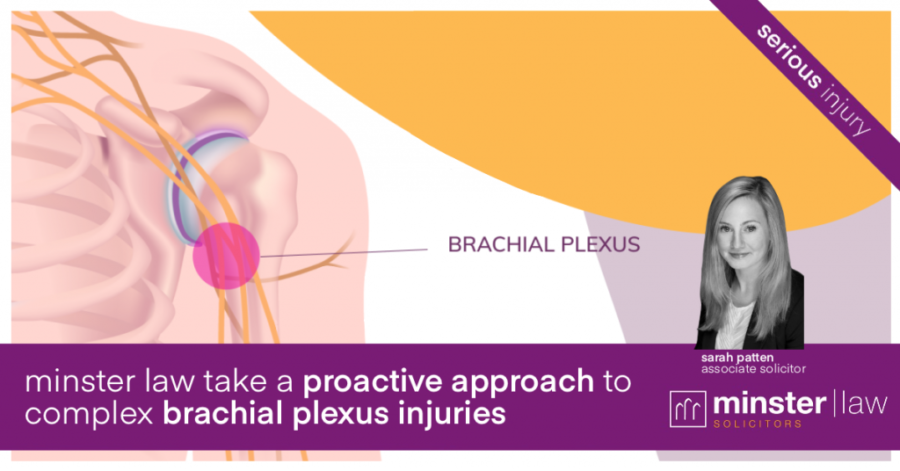
Most people have never heard of their brachial plexus, but a brachial plexus injury can have a life changing impact – Minster Law associate Solicitor Sarah Patten sheds some light on what it is and how we best support clients who suffer from an injury.
The brachial plexus is the network of nerves that sends signals from the spinal cord to the shoulder, arm and hand, Sarah said.
“This is made up of lower nerves from the cervical spine and the upper nerve from the thoracic spine.”
“A brachial plexus injury occurs when these nerves are stretched, compressed, or in the most serious cases, ripped apart or torn away from the spinal cord.”
Nerves are highly functional, they control movement, touch, temperature sensation, pain and growth and the brachial plexus is a vulnerable area between the neck and arm.
The C5 nerve supplies mainly the shoulder function, the C6 supplies mainly flexion in the arm, the C7 supplies mainly wrist extension and the C8 and T1 supply mainly hand function.
Therefore, brachial plexus injury can affect movement in the shoulder, elbow, forearm muscles to the wrist as well as the hand.
“Minor brachial plexus injuries, known as stingers or burners, are common in contact sports, such as football,” Sarah said.
“Babies sometimes sustain brachial plexus injuries during birth and other conditions, such as inflammation or tumors, may affect the brachial plexus.”
However, the most severe brachial plexus injuries usually result from road traffic collisions, most commonly motorcycle accidents, as they are high energy impacts.
“Severe brachial plexus injuries can leave an arm in whole or in part paralyzed, but surgery may help restore function,” Sarah said.
Signs and symptoms of a brachial plexus injury can vary greatly, depending on the severity and location of the nerve damage. On occasions medical practitioners can find them difficult to detect.
Usually only one arm is affected, because injury to the brachial plexus tends to occur through direct trauma.
Minor or modest injuries can cause symptoms in one part of the arm, for example at the elbow or manifest as altered sensation in the hand.
“For example, it could be a nerve pain shooting down the whole arm or some numbness or slight weakness in the arm, at say the elbow or wrist for example. Symptoms may be passing or go on for some hours.”
In some cases, depending on the extent of the damage the nerves will regenerate, and full recovery can be made – but more significant traumas can be caused by a tear or rupture in the nerves.
The more severe symptoms result from injuries that significantly injure or even tear or rupture the nerves with the most serious injury occurring when the nerve root is torn from the spinal cord.
“Where there has been a severed nerve then usually there is no possibility of regeneration or recovery unless a successful nerve graft is surgically performed,” Sarah said.
The more severe injuries can lead to amputation at the shoulder, elbow or wrist.
Signs and symptoms of more-severe injuries can include:
- Severe pain, as a burning or electric shock type pain or a crushing or constricting pain
- Numbness and lack of sensation on the skin, pins and needles sensations
- Weakness or inability to use certain muscles in the hand, arm or shoulder
- Complete lack of movement and feeling in the arm, including the shoulder and hand
Various medical disciplines may be involved in the diagnosis, treatment and care of a patient with a brachial plexus injury.
The coordinating Consultant is usually a peripheral nerve surgeon, however, input from other areas such as orthopedics, pain management, plastic surgery and psychiatry may be sought.
Occupational therapists and orthotic and prosthetic specialists may also have input as part of the treating team.
Considered treatments can be broadly listed as:
Surgical neurologic reconstruction:
- Nerve graft, using nerves taken from another part of the body
- Nerve transfer, rewiring of the existing and working nerves
- TMR and/ or osseointegration, targeted muscle reinnervation, integrating the nerves into muscle and a microchipped prosthetic
Functional and bionic electric prothesis such as:
- Myopro Orthoses or Ottobock Ergo Elbow, devices which can robotically move the arm and fingers to achieve a functional outcome.
Conservative treatments:
- Intensive physiotherapy
- Pain Management input and coping mechanisms
- Psychological input
- Passive bracing
“At Minster Law we know how serious a brachial plexus injury can be,” Sarah said.
“Early intervention, rehabilitation and case management are essential for the best possible outcome.”
Certainly, early intervention is crucial if the best possible outcome for the client is to be achieved – that is why it is important to instruct a Solicitor who can spot Brachial Plexus issues and ensure appropriate medical intervention is obtained.
In a recent training session delivered by the peripheral nerve surgeon and attended by Minster Law, Tom Quick, Peripheral Nerve Surgeon and a specialist in brachial plexus injuries recognises the difficult in diagnoses and that nerve injury is often misunderstood.
We will look to support our client’s and secure the very best treatment options and engage with rehabilitation.
We understand that these injuries can be life changing and affect domestic, social and employment aspects of life.
“Only the very best expert evidence will do for comprehensive opinion on any long-term degeneration with aging profiling and that there will be a need for long term follow up,” she said.
Consideration will absolutely be given to:
- Medical expenses and treatment options and what is available on a private basis
- Pain levels, pain management relief, pain relieving injections, physiotherapy and psychological input, possible future surgeries
- Prosthetics and orthotics
- The care and equipment need of the individual and requirement for domestic support and their personal support requirements
- The effect on day to day living and the domestic situation, such as childcare arrangements
- Aids and appliances for example in the kitchen, bathroom and garaging
- The effect and impact on any DIY and gardening
- If any accommodation assessment is required
- The effect on work and whether vocational assessments / rehabilitation will support
- Additional holiday expenses
